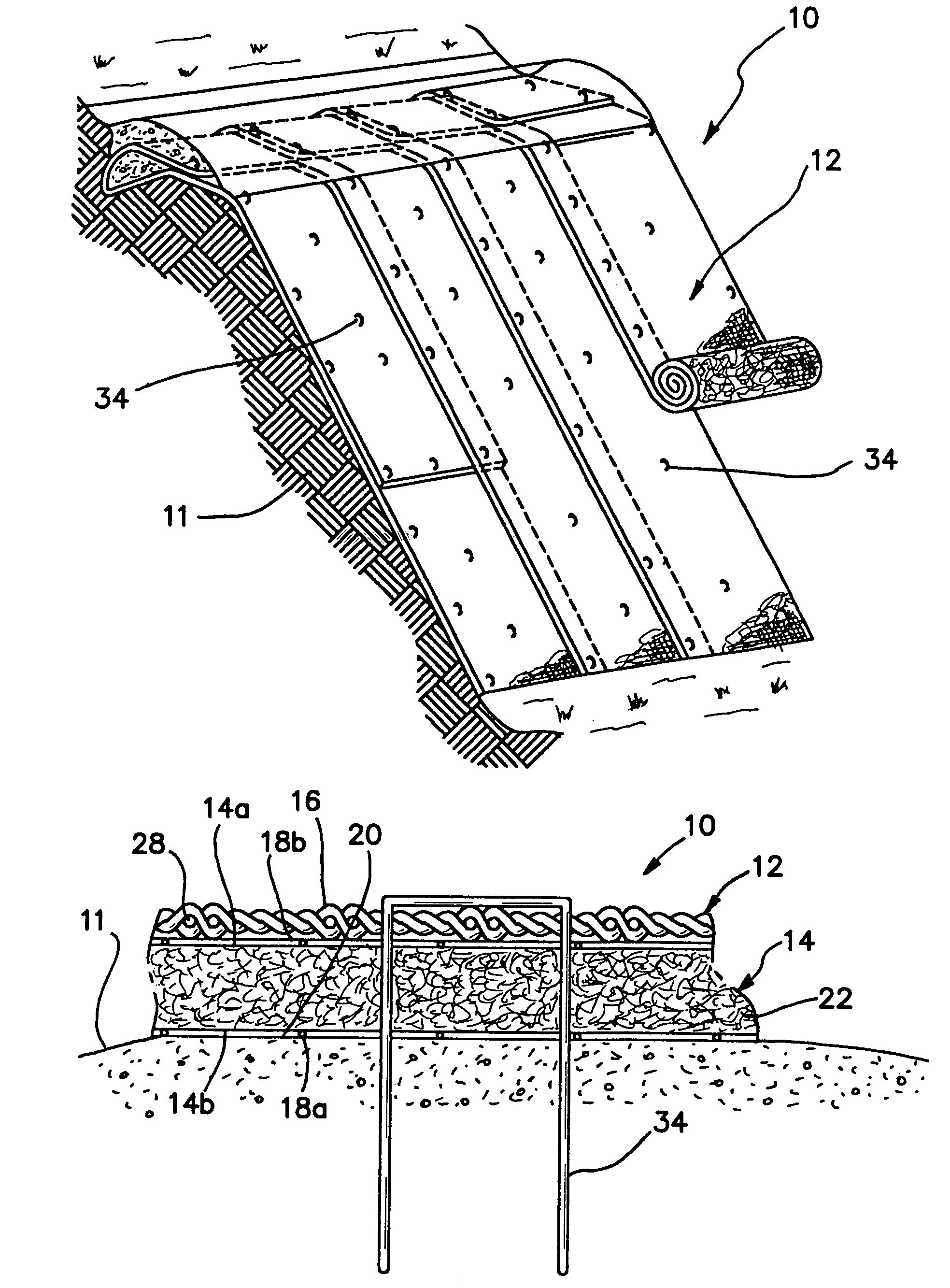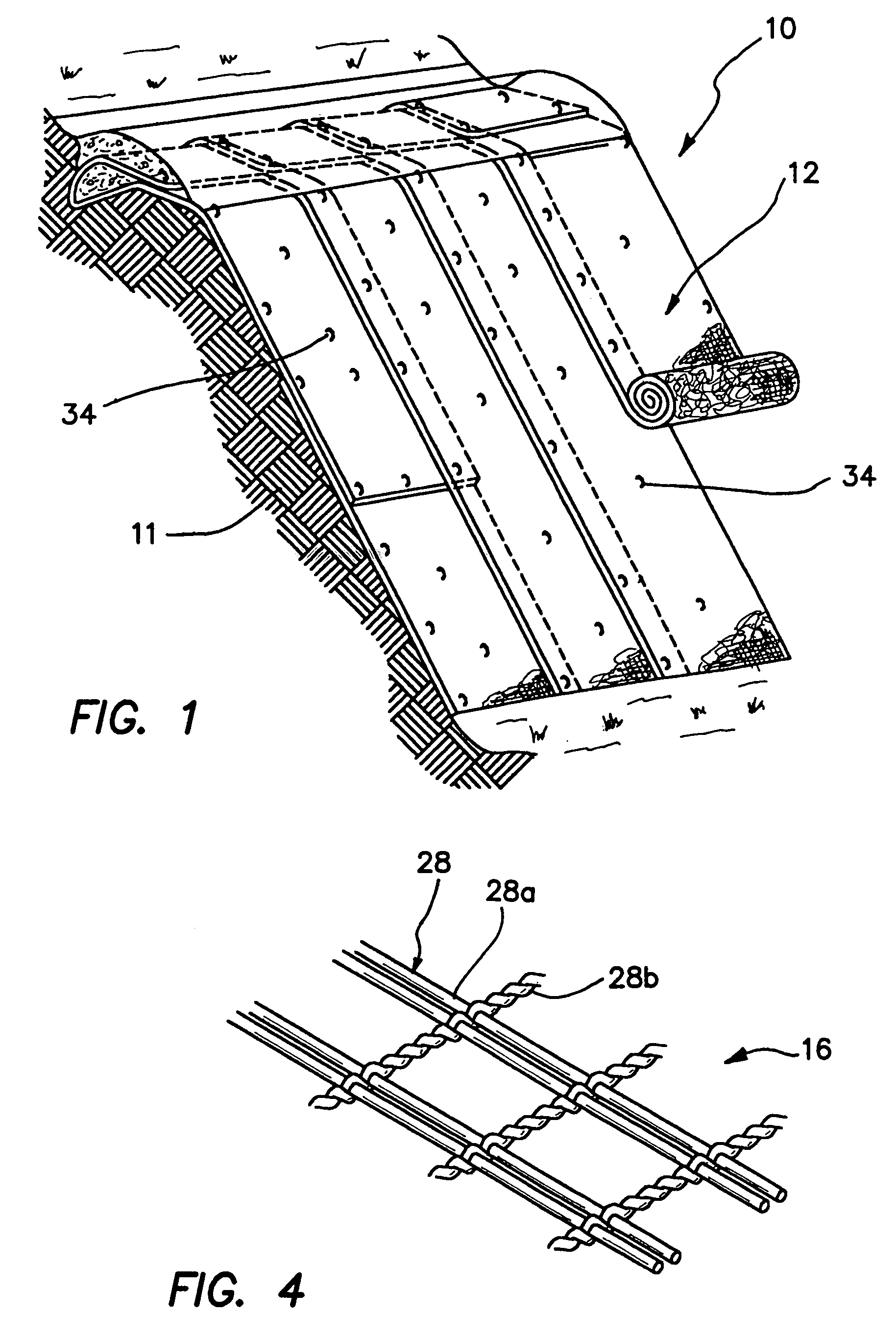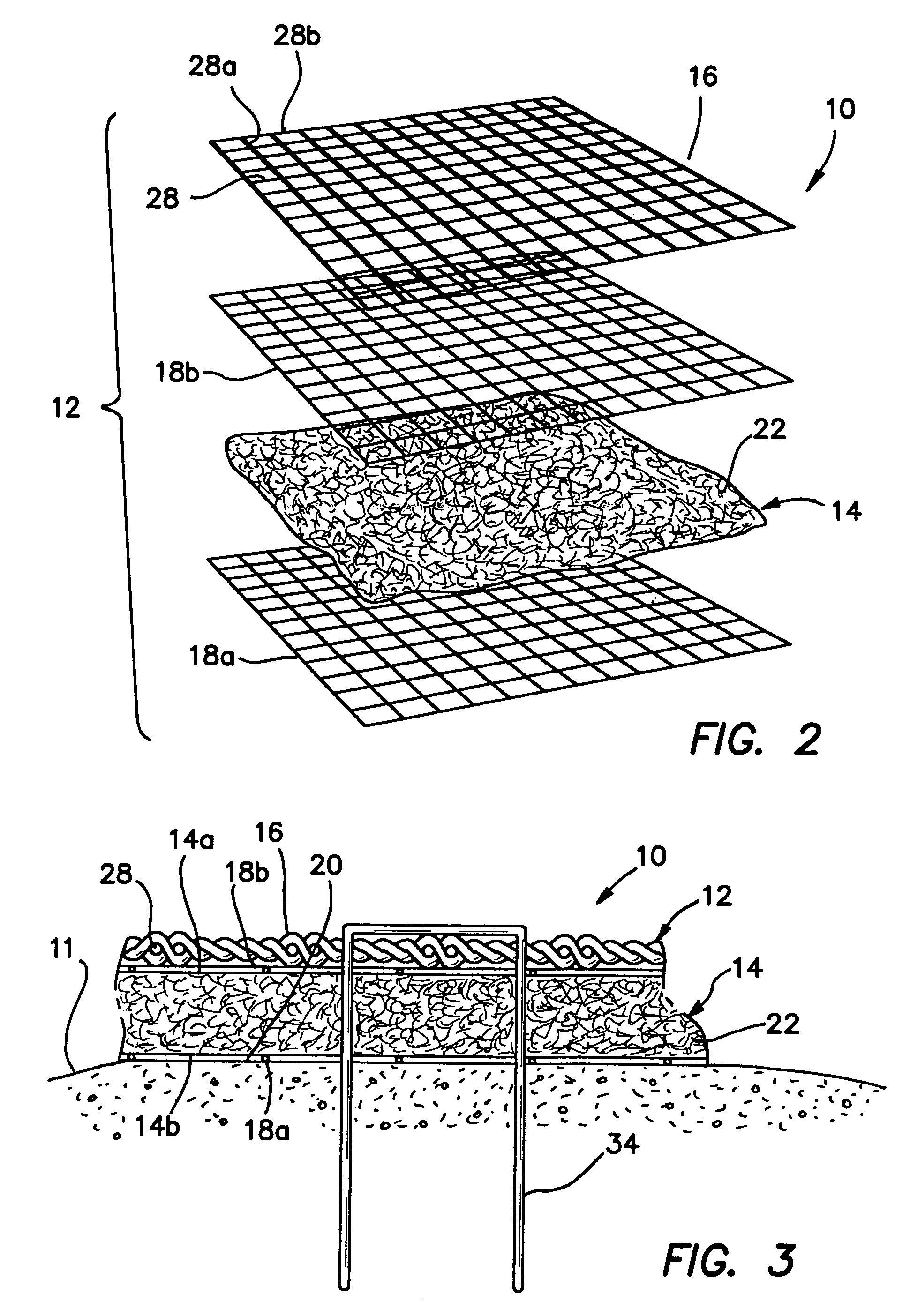Erosion control reinforcement mat
a technology of erosion control and reinforcement mats, applied in soil conditioning compositions, excavations, applications, etc., can solve the problems of affecting soil fertility, unable to disclose the matting system, and posing potential installation problems and setbacks, so as to achieve effective resistance to high shear stress, withstand higher flow velocities, and increase mass unit density
- Summary
- Abstract
- Description
- Claims
- Application Information
AI Technical Summary
Benefits of technology
Problems solved by technology
Method used
Image
Examples
example
[0045]As a specific example, an erosion control system in accordance with the present invention comprises a fiber matrix core layer 14 of 100% coconut fiber and a permanent (non photodegradable) polypropylene biaxial geogrid upper surface 16. The matting is further reinforced with an upper net 18a and bottom net 18b and a monofilament thread having a strength of at least about 1000 denier. The matting 12 in accordance with this specific example has a weight of about 0.95 pounds per square yard, a thickness of at least about 0.32 inches. Despite the In addition, the matting has a tensile strength of up to about 172.6 pounds per square foot, and an elongation of up to about 18.1 percent and a Mannings “N” value of about 0.026. It is noted that these parameters (tensile strength, elongation) are significantly higher than conventional erosion control blankets having a similar flexibility. When said matting 12 is placed on or secured to a severely sloped, unvegetated channel surface, the...
PUM
 Login to View More
Login to View More Abstract
Description
Claims
Application Information
 Login to View More
Login to View More - R&D
- Intellectual Property
- Life Sciences
- Materials
- Tech Scout
- Unparalleled Data Quality
- Higher Quality Content
- 60% Fewer Hallucinations
Browse by: Latest US Patents, China's latest patents, Technical Efficacy Thesaurus, Application Domain, Technology Topic, Popular Technical Reports.
© 2025 PatSnap. All rights reserved.Legal|Privacy policy|Modern Slavery Act Transparency Statement|Sitemap|About US| Contact US: help@patsnap.com



